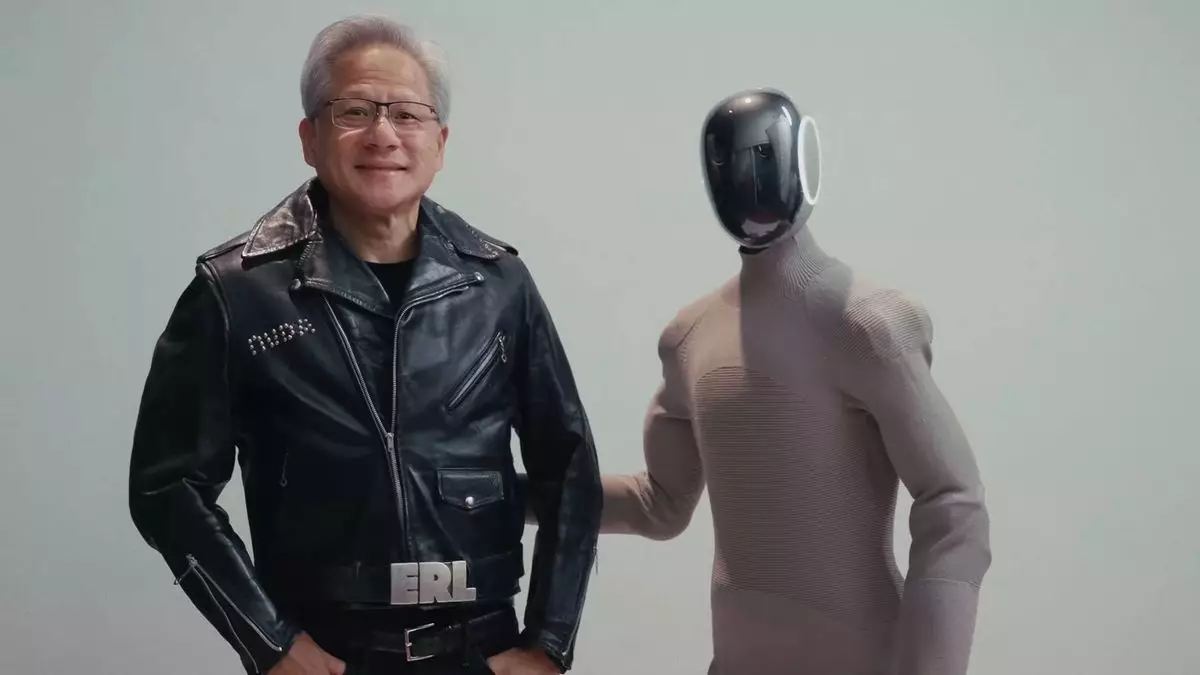In an exciting partnership that bridges the gap between cutting-edge technology and everyday life, 1X Technologies and NVIDIA have joined forces to bring the Neo Gamma humanoid robot closer to our homes. This collaboration, publicly showcased in a captivating video where Neo presented a studded leather jacket to NVIDIA’s CEO Jensen Huang, promises more than just a fashionable statement; it speaks to the future of automation within our domestic environments. The Neo Gamma is not just a robot; it is a symbol of the ambition to create a genuinely helpful addition to our homes. While some may scoff at the fashion choices and the performance of these mechanical creations, the underlying potential of this partnership is worth examining deeply.
The Origins of 1X Technologies
Founded in Norway as Halodi Robotics and rebranded in 2023, 1X Technologies has set its sights on revolutionizing automation across various sectors. With a firm foothold in California, the company’s ambition to innovate through humanoid robots for both industry and domestic spaces is steadily coming to fruition. Their recent collaboration with NVIDIA demonstrates their commitment to break new ground by tapping into the world of artificial intelligence. The involvement of NVIDIA—one of the leading names in AI and graphics processing—sets high expectations for the development and functionality of the Neo Gamma. According to Eric Jang, 1X’s VP of AI, the partnership aims at addressing autonomy challenges that typically hinder the deployment of humanoid robots, emphasizing the urgency and desire to accelerate their practical use in households.
The Technical Backbone of Partnership
At the heart of this collaboration is the advanced technological infrastructure that enables Neo Gamma to perform complex tasks that were once relegated to science fiction. The teams have designed a dynamic dataset API that collects and analyzes data from both 1X’s offices and employee homes. This real-world input is invaluable for refining the robot’s ability to adapt and learn in actual living environments. Combining this dataset with powerful on-board GPUs, the Neo Gamma operates a continuous vision-action loop, vital for executing its tasks with precision.
The tests performed involving simple domestic functions—such as loading a cup into the dishwasher—highlight the robot’s gradual development. The focus on these seemingly trivial actions can’t be overstated; they mark the initial steps toward full autonomy. Despite the apparent simplicity, executing these tasks safely and efficiently presents a lasting challenge. The technological integration of 1X and NVIDIA can only be described as a promising leap toward a future where humanoid robots are commonplace in households.
Cautious Optimism Amidst Skepticism
While the video demonstrations showcase the Neo Gamma’s capabilities, they also reveal limitations that evoke skepticism. Observing the robot’s tentative movements while handling fragile objects raises important questions about its reliability. Many viewers might share a sense of wariness about this technology pretending to fulfill the promise of a fully autonomous home assistant. The task of efficiently loading a dishwasher, while seemingly mundane, requires intricate precision in execution—an area where Neo Gamma still has much to learn.
The tendency to market these robots with aesthetically appealing videos can cloud the reality of their current functionality. It is crucial to differentiate between the ambitious theoretical capabilities of such robots and their practical applications today. The excitement surrounding the innovation must be balanced with a dose of realism about their limitations, as the road toward widespread acceptance and utility in homes remains fraught with challenges.
The Bigger Picture: Societal Implications
The broader implications of this technological evolution are profound. As humanoid robots become increasingly capable, they will redefine roles within households, potentially impacting labor markets and human interactions. The prospect of machines assisting in daily chores raises ethical questions: Do we risk becoming overly reliant on machines, or could they enhance our lives by freeing time for more creative or valuable endeavors? Moreover, how will these developments affect the job market? A future filled with humanoid robots warrants an exploration of a new societal framework that embraces automation without sacrificing human dignity and purpose.
The collaboration between 1X Technologies and NVIDIA may still be in its formative stages, yet it signifies a tantalizing glimpse into a future where humanoid robots are part of our everyday lives. By pushing the boundaries of artificial intelligence and robotics, they are not merely creating machines; they are challenging us to reconsider the meaning of home and our interaction with technology. The trajectory of this collaboration will undoubtedly influence the evolution of domestic robots and their eventual acceptance by society, transforming our living spaces in ways we are only beginning to fathom.

